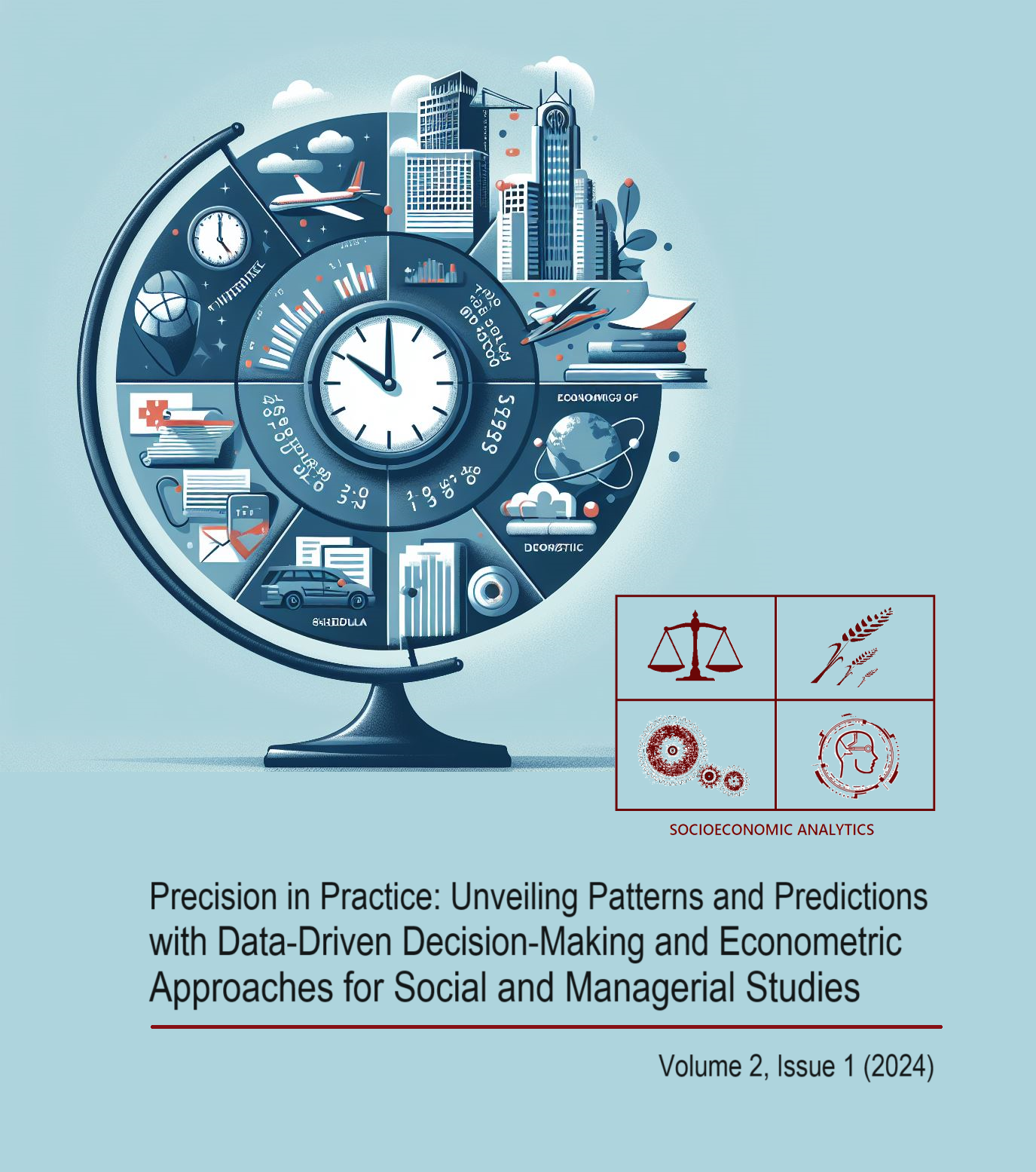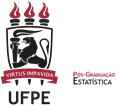A DEA approach for measuring healthcare efficiency in medical, clinical and obstetric specialties
DOI:
https://doi.org/10.51359/2965-4661.2024.261852Keywords:
efficiency, public health, hospitals, healthcare, Data Envelopment Analysis, AlagoasAbstract
Alagoas occupies the worst public health positions in Brazil, and first in the indicators of infant mortality, presenting an extremely high mortality rate (48.2 deaths per thousand live births to a Brazilian average of 26.3 deaths per thousand live births). Such problem highlights the need for quantitative methodologies in order to evaluate the technical efficiency of state health units in search of continuous improvement of their results. The present study develops an efficiency analysis of several public and private hospitals located in the state of Alagoas using the Data Envelopment Analysis (DEA) as a tool, aiming to obtain efficiency indices to support the decision making of public agents. The data used refer to the period from August 2018 to July 2019, in which the specialties of Medical Clinic, Surgical Clinic and Obstetrics were selected to compose the analysis inputs and outputs. The evaluation brings considerations and contributions regarding the public health problem in the state and in the country.
References
Ayres, A. (2019). Alagoas destaca fortalecimento da saúde pública em conferência estadual. Disponível em: http://conselho.saude.gov.br/ultimas-noticias-cns/655-alagoas-destaca-fortalecimento-da-saude-publica-em-conferencia-estadual. Accessed in: 14 dez. 2019.
Azadeh. A., Ghaderi, S. F., Omrani, H., Eivazy, H. (2009). An integrated DEA–COLS–SFA algorithm for optimization and policy making of electricity distribution units. Energy Policy, 37(7), 2605–2618.
Banker, R. D., Charnes, A., Cooper, W. W. (1984). Some Models for Estimating Technical and Scale Inefficiencies in Data Envelopment Analysis. Management Science, 30(9), 1078-1092.
Celestino, P. (2002). Nó de Normas. Notícias Hospitalares. Gestão de Saúde em Debate, 4(39), 23-41.
Charnes, A., Cooper, W. W., Rhodes, E. (1978). Measuring the Efficiency of Decision Making Units. European Journal of Operational Research. 2(6), 429-444.
Colin, E. (2013). Pesquisa Operacional: 170 aplicações em estratégia, finanças, logística, produção, marketing e vendas. LTC.
Cooper, W. W., Seiford, L. M., Tone, K. (2006). Introduction to data envelopment analysis and its uses: with DEA-solver software and references. Springer Science & Business Media.
Cooper, W. W., Seiford, L. M., Tone, K. (2007). Data Envelopment Analysis: A Comprehensive Text with Models, Applicat ions, References and DEA-Solver Software. Kluwer Academic Publishers.
Encinas, R. (2010). Oportunidades de aplicação da análise envoltória de dados em auditorias operacionais do Tribunal de Contas da União. TCC (Especialização em Orçamento Público) - Controladoria Geral da União.
Farrel, M. J. (1957). The Measurement of Productive Efficiency. Journal of the Royal Statistic Society. series A(3), 253-290.
Giannakis D., Jamasb T., Pollitt M. (2005). Benchmarking and incentive regulation of quality of service: An application to the UK electricity distribution networks. Energy Policy, 33(17) 2256– 2271.
Gomes, A. L., & Ponchio, L. A. (2005). A função custo no setor do leite: uma abordagem para a região centro-sul do Brasil. CEPEA/Esalq-USP.
La Forgia, G. M., & Couttolene, B. F. (2009). Desempenho hospitalar no Brasil: em busca da excelência. In Desempenho hospitalar no Brasil: em busca da excelência (pp. xlix-446).
Mello, J. C. C. B. S., Meza, L. A., Gomes, E. G., Neto, L. B. (2005). Curso de Análise Envoltória de dados. Simpósio Brasileiro de Pesquisa Operacional. Gramado.
Mendes, E. V. (1998). A organização da saúde no nível local. Hucitec.
Savian, M. P., Bezerra, F. M. (2019). Análise de eficiência dos gastos públicos com educação no ensino fundamental no estado do Paraná. Economia & Região, Londrina (PR), v. 1, n. 1, p. 26-47, jan./jul. 2013. DOI: 10.5433/2317-627X.2013v1n1p26.
Nepomuceno, T. C., Silva, W. M., Nepomuceno, K. T., & Barros, I. K. (2020). A DEA-based complexity of needs approach for hospital beds evacuation during the COVID-19 outbreak. J. of Healthcare Engineering. https://doi.org/10.1155/2020/8857553.
Nepomuceno, T. C. C., Piubello Orsini, L., de Carvalho, V. D. H., Poleto, T., & Leardini, C. (2022). The core of healthcare efficiency: a comprehensive bibliometric review on frontier analysis of hospitals. Healthcare, 10(7), p. 1316.
Sherman, H. D., Zhu, J. (2006). Data Envelopment Analysis Explained. Service Productivity Managment: Improving Service Performance using Data Envelopment Analysis (DEA) by H. David Sherman and Joe Zhu. Springer science & business media, 49-89.
Souza, M. W. et al. (2006). Análise da eficiência utilizando a metodologia DEA em organização militar de saúde: o caso da Odontoclínica Central do Exército. Rima. Available in https://rima.ufrrj.br/jspui/handle/20.500.14407/15121. Last accesed in April 2024.
Souza. A. A. et al. (2012). Uma análise financeira do hospital metropolitano de urgência e emergência. IX Convibra Administração- Congresso virtual brasileiro de administração.
Souza, M., Souza, R., Pessanha, J., Oliveira, C., Dialho, M. (2014). An application of data envelopment analysis to evaluate the efficiency level of the operational cost of Brazilian electricity distribution utilities. Socio-Economic Planning Sciences, 48(3), 1-6.
Wolff, L. D. G. (2005). Um modelo para avaliar o impacto do ambiente operacional na produtividade dos hospitais brasileiros. [Doctoral dissertation, Universidade Federal de Santa Catarina]. Digital.
Zhu, J. (2014). Quantitative models for performance evaluation and benchmarking: data envelopment analysis with spreadsheets. Springer Science & business media.
Downloads
Additional Files
Published
Issue
Section
License
Copyright (c) 2024 Fabrício da Silva Santos, Susane de Farias Gomes

This work is licensed under a Creative Commons Attribution-NonCommercial-NoDerivatives 4.0 International License.
Authors who publish with Socioeconomic Analytics retain the copyright of their work and agree to license it under a Creative Commons Attribution-NonCommercial-NoDerivatives 4.0 International (CC BY-NC-ND 4.0) license. This means that the work can be shared, copied, and redistributed in any medium or format, as long as it is not used for commercial purposes, and the original work is properly cited. The work cannot be changed in any way or used to create derivative works.










